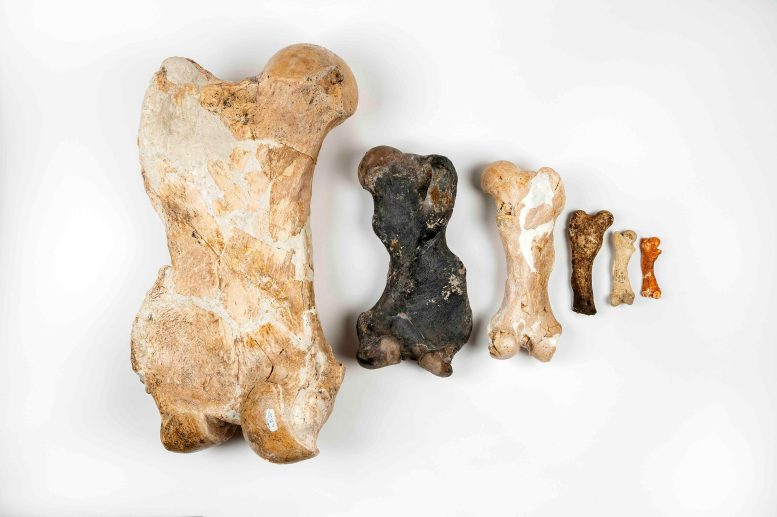From Fossilized Poop to Giant Sloths: What Scientists Have Discovered

Sloths today may look like gentle, slow-moving animals that spend most of their lives hanging from trees, but their evolutionary past tells a very different story. A new study published in Science has shed light on the incredible diversity of ancient sloths, including species that grew to giant proportions, rivaling elephants in size.
By analyzing ancient DNA, fossil evidence, and ecological data, scientists have pieced together how sloths evolved, adapted to different habitats, and eventually disappeared. And yes — part of this story involves a 20-foot pile of fossilized sloth poop.
How Scientists Studied Ancient Sloths
The research team collected and studied over 400 fossils from 17 natural history museums, combined with ancient DNA evidence and morphological measurements. By doing this, they built a detailed evolutionary tree of sloths that stretches back more than 35 million years.
The researchers carefully measured bones, analyzed preserved DNA from extinct and living sloths, and looked at past environmental data to understand body size, feeding behavior, and habitat. A particularly valuable contribution came from the Florida Museum of Natural History, which has the largest collection of North American and Caribbean sloths in the world.
This study was not limited to fossils alone. Scientists also considered the climate and habitat changes that shaped the sloth lineage, revealing how major geological and climatic shifts influenced sloth size and lifestyle.
Small Tree-Dwellers and Giant Ground Sloths
Today, there are only two species of tree-dwelling sloths, weighing around 14 pounds on average. These modern sloths live almost entirely in trees, and their size is constrained by the fact that tree branches can only support so much weight. Larger bodies would risk deadly falls.
But in the past, sloths weren’t limited to trees. Many lived on the ground and grew into giants. For example, the genus Megatherium could reach the size of an Asian bull elephant, weighing nearly 8,000 pounds. These animals looked somewhat like enormous, bear-like creatures that stood on two legs and used their long tongues to strip leaves from tall trees — playing a role similar to giraffes in modern ecosystems.
Other species were much smaller. The Shasta ground sloth, for example, thrived in desert environments by eating cacti and tough shrubs. Its average size was nowhere near that of Megatherium, showing how diverse sloth body sizes could be depending on their habitats.
The 20-Foot Poop Pile
One of the most fascinating discoveries related to ancient sloths comes from Rampart Cave near Lake Mead in the Grand Canyon region. In 1936, paleontologists discovered a mound more than 20 feet thick, made of fossilized sloth dung, bat guano, and packrat debris. This deposit shows that sloths repeatedly used the same caves not only for shelter but also as communal latrines.
These massive dung deposits are known as coprolites, and they provide unique information about sloth diets and environments. By analyzing coprolites, scientists have learned that some sloths ate plants like yucca, saltbush, desert shrubs, and Joshua tree, and they played an important role in seed dispersal.
Remarkably, coprolites also preserve evidence of parasites such as roundworms and protozoa, offering insight into the health and digestive systems of these ancient giants.
Some giant sloths even dug their own caves. Their enormous claws — among the largest of any known mammal — left scratches on cave walls that are still visible today.
Why Did Some Sloths Get So Big?
The big question researchers wanted to answer was why some sloths remained small while others became enormous. The study found that habitat and climate were the most important factors.
- Tree-dwelling sloths always remained small due to the physical limits of trees.
- Semi-arboreal sloths, which spent part of their time on the ground, grew larger, averaging about 174 pounds.
- Ground-dwelling sloths had the greatest size range, from moderately sized species to giants weighing several tons.
Several ecological advantages came with being large. Bigger bodies conserved energy and water, made it easier to travel across open landscapes, and offered some protection from predators. Some species also developed bony skin plates (osteoderms), similar to those found in armadillos, which gave extra protection.
Climate Shifts and Evolutionary Changes
The size of sloths did not remain constant throughout their history. For about 20 million years, sloths maintained relatively stable body sizes. But then, during the Mid-Miocene Climatic Optimum (about 15 million years ago), things changed dramatically.
A massive volcanic event in what is now the Pacific Northwest released huge amounts of greenhouse gases, warming the planet. During this period, forests expanded, and sloths responded by getting smaller, likely to cope with heat stress and take advantage of denser forests.
Later, as global cooling resumed, sloths began increasing in size again. Their largest forms appeared during the Pleistocene Ice Ages, when colder climates made bulkier bodies advantageous.
Adaptations Beyond Size
Ancient sloths were incredibly versatile:
- Some climbed mountains, like the Andes, while others roamed savannahs, deserts, and boreal forests in North America and Canada.
- A surprising lineage, Thalassocnus, even adapted to marine life. These sloths developed denser ribs for buoyancy and longer snouts to graze on seagrass, much like modern manatees.
This adaptability helped sloths spread widely, but their survival strategies ultimately could not protect them from what was to come.
The Fall of the Giants
Sloths reached their peak diversity and size during the Ice Ages, but around 15,000 years ago, their numbers plummeted. While climate change played some role, the timing aligns more closely with the arrival of humans in the Americas.
Large ground sloths, despite their size, were relatively slow and poorly defended, making them easy prey for early hunters. Archaeological evidence, such as cut marks on bones in Argentina, shows that humans butchered sloths for food.
Tree-dwelling sloths managed to survive much longer, avoiding human contact by staying in the forest canopy. Yet even they were not entirely safe. In the Caribbean, two species of tree sloths survived until about 4,500 years ago, disappearing not long after humans settled the islands.
Why This Discovery Matters
The story of sloths is not just about giant animals from the past. It also highlights how climate change, habitat shifts, and human activity can reshape ecosystems. By studying sloths, scientists gain insight into the broader forces that drive evolution and extinction.
Sloths are part of a larger group called Xenarthrans, which also includes anteaters and armadillos. This group originated in South America and has a unique evolutionary history shaped by continental shifts and climate cycles.
Understanding why giant sloths thrived and why they vanished helps us better appreciate the delicate balance of ecosystems and how easily that balance can be disrupted.
Modern Sloths: Survivors of a Giant Legacy
The two species of sloths alive today are just a tiny remnant of a once diverse and widespread family. While they may seem fragile and slow, their survival is remarkable given the mass extinction of their larger relatives.
Modern sloths still carry traces of their evolutionary past:
- Their close relation to armadillos is evident in their shared traits like low metabolic rates.
- Their unusual digestive system, which can take nearly a month to process a meal, reflects ancient adaptations for energy efficiency.
- Their ability to survive falls of up to 100 feet shows resilience, even if they appear vulnerable.
Sloths remind us that survival often favors not the biggest or fastest, but the most adaptable.
Reference
Research paper: The emergence and demise of giant sloths – Science (May 22, 2025)





